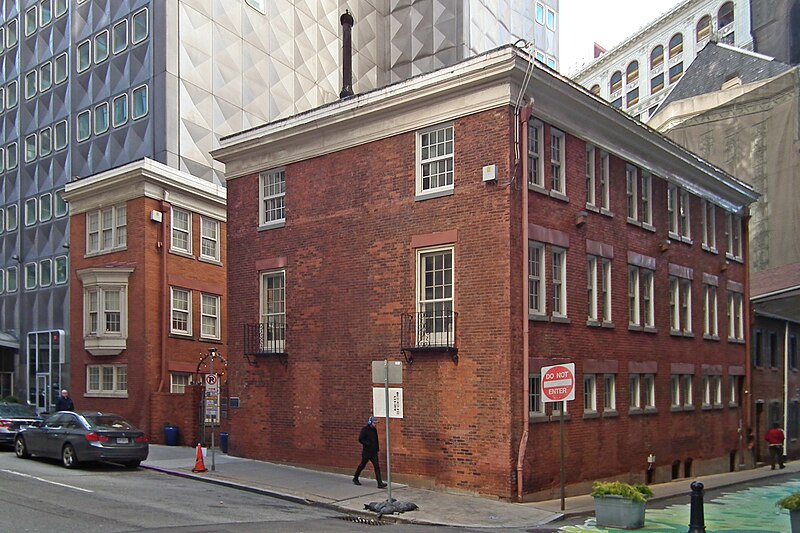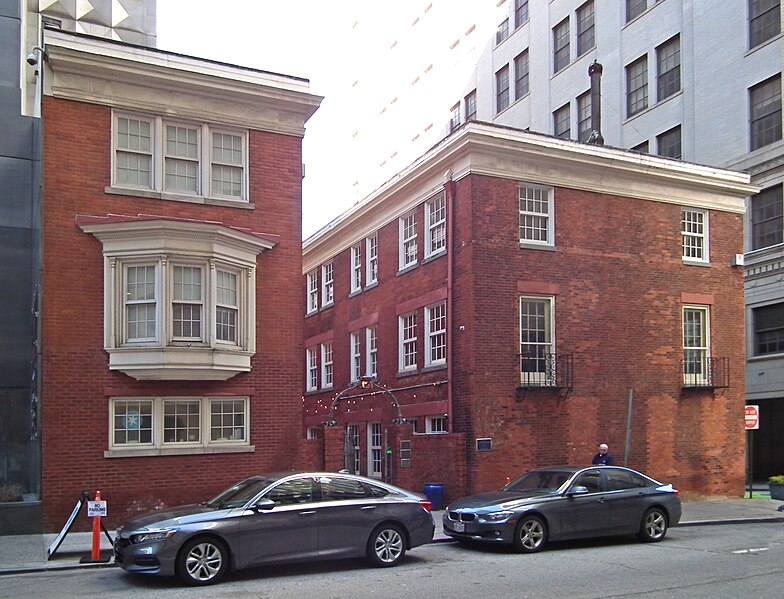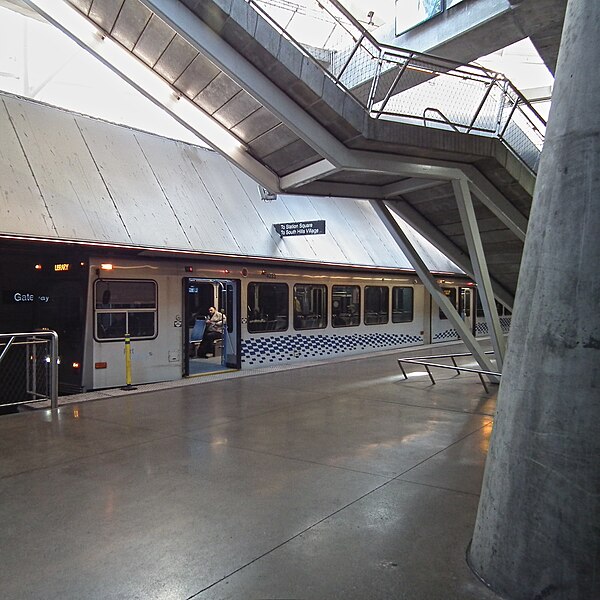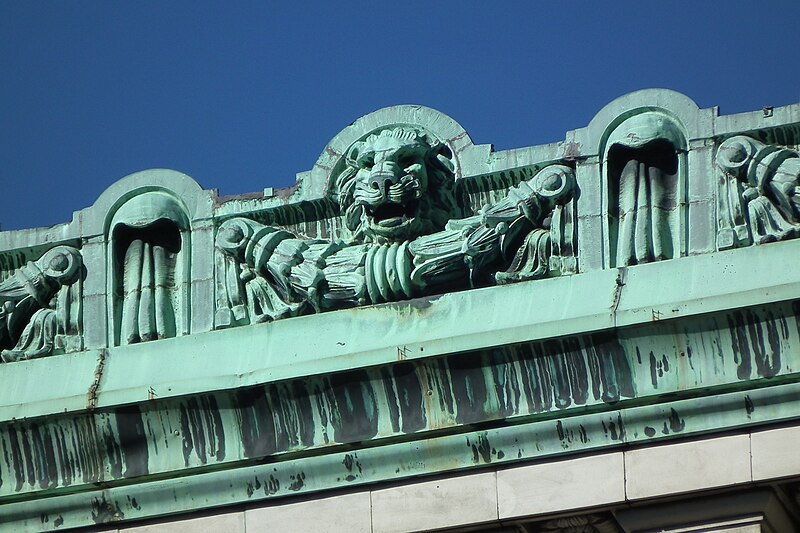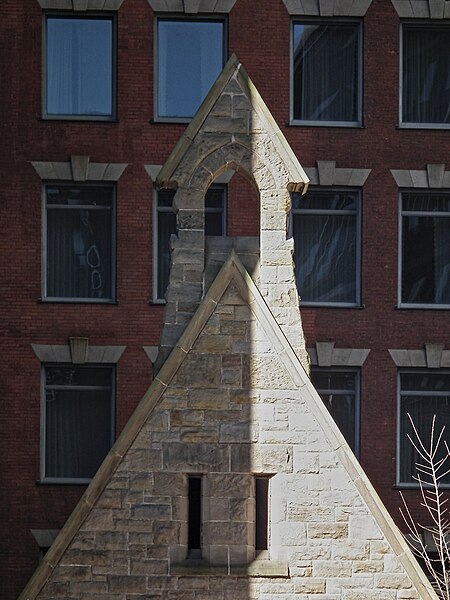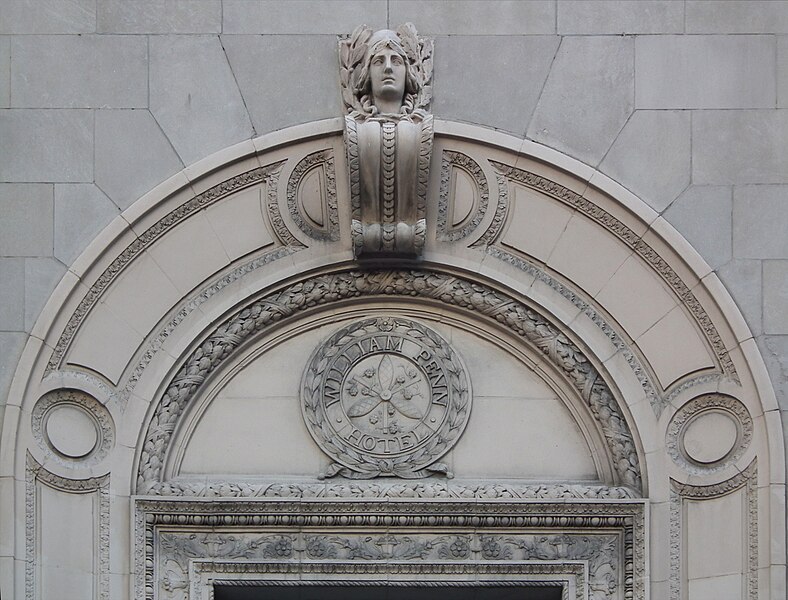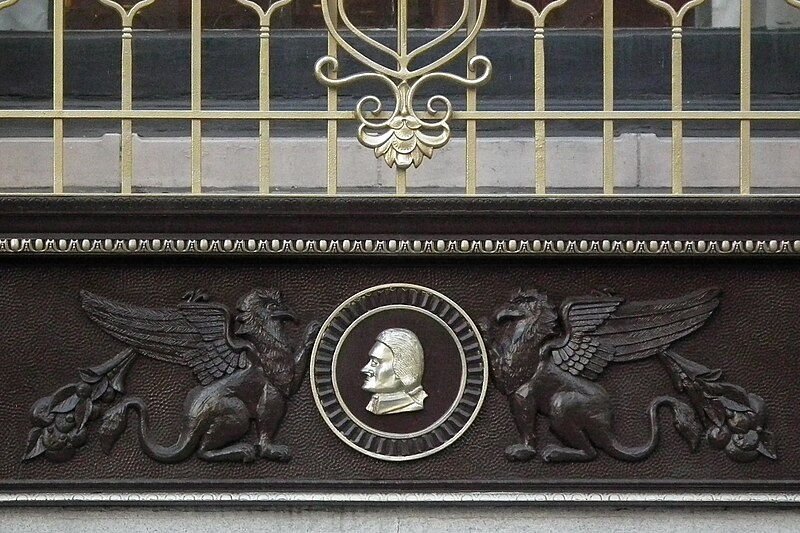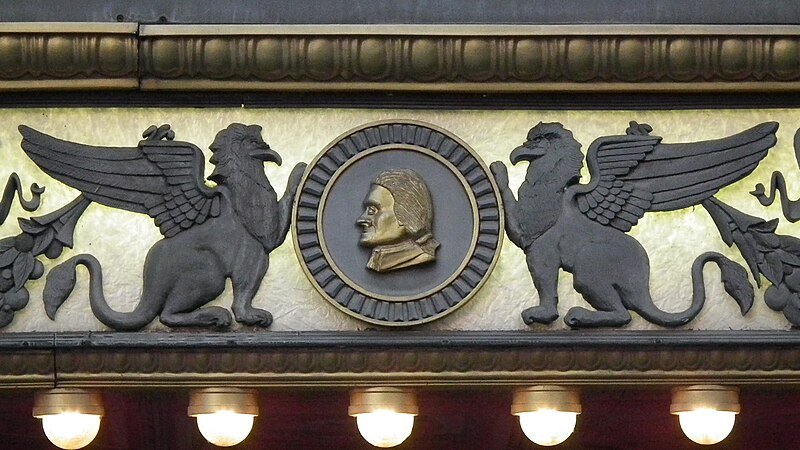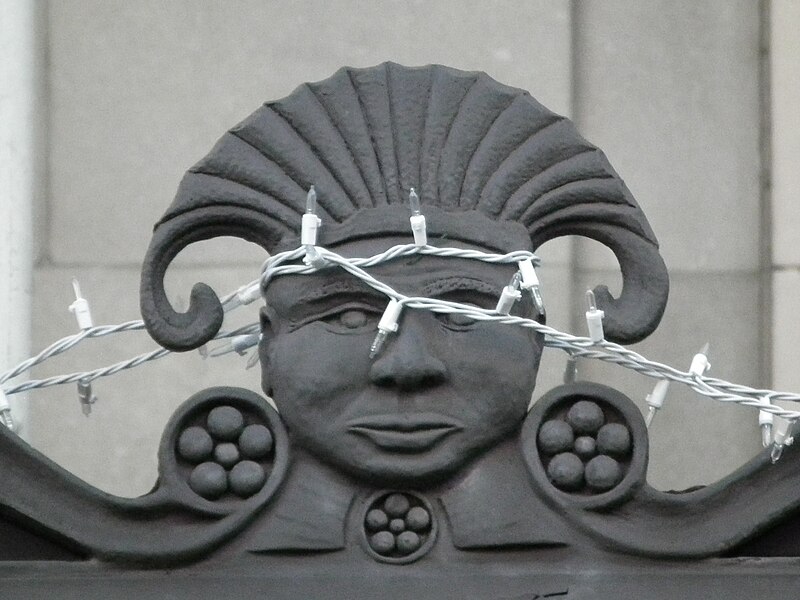
Thanks to the research of an architect correspondent, we can say with fair confidence that this neglected building on Smithfield Street was designed by Frederick Osterling, one of the titans of Pittsburgh architecture. It was built in about 1898 for John Daub, whose name in big letters stares down at us from above the fifth floor.1

This building has suffered the usual loss of cornice, and the first floor was entirely remodeled at some point by someone who thought weird pebbledash stucco would look just right on a Romanesque building from the 1890s. But between those extremities most of the decorative details are preserved.

The Daub Building is vacant right now and therefore in danger; we hope that its attribution to Osterling will encourage preservation and restoration.
- Philadelphia Real Estate Record and Builders’ Guide, September 15, 1897: “F. J. Osterling, Telephone Building, will prepare the plans for the John Daub Building, to be erected on Smithfield street, near Seventh avenue.” Thanks to David Schwing. ↩︎

